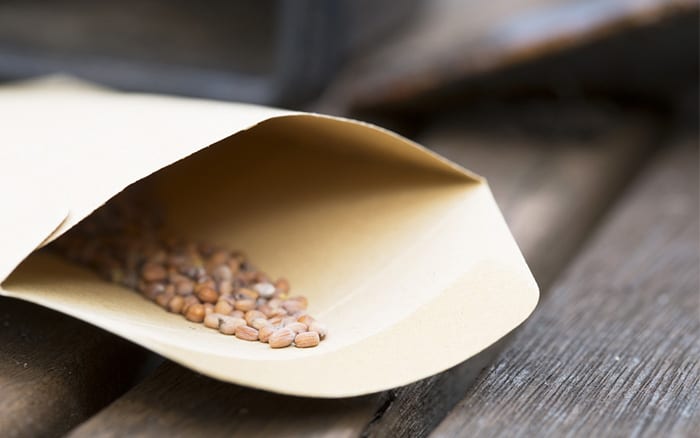Take advantage of nature’s offer and get new plants for free – harvest seeds from your own garden, or even local streets or woodland. You can collect them from trees, shrubs, annuals, perennials and biennials, plus herbs and ornamental grasses.
Different plants have different ways of storing their seeds. They can come in pods, berries and capsules like poppies. Many trees produce winged seeds. If you want to collect them from a plant, remember not to deadhead it.
The most important thing is to collect when they are ripe. There is no set time – the plant will give them up when it’s ready. Seedheads will often change colour, from green to brown, red or black.
They may also change colour. They will go from green or white to a brown or black colour, indicating that they are ready. Flower heads will start to fall apart when the seeds are ripe.
You need to catch them after they have ripened, but before they disperse them. Keep checking on them daily.
How to collect seeds

Here’s my failsafe way to collect seeds. You will need plenty of plastic freezer bags, which keep them dry and uncontaminated.
Choose a dry day. Place the bag over the pod or flower head to make sure they don’t fall all over the ground, and cut it into the bag. Collect as many as possible.
Take the bags indoors and gently tip them out over some spread out newspaper. Dry the seeds for a few days in an airing cupboard or warm, dry room.
The poppies should release the seeds, but if not you can gently break open seedheads or shake the seeds out.
Berries should be put in a fine sieve and mashed. Wash away the pulp with cold water and leave the seeds to dry for a few days.
If there is surrounding material (chaff) on any of your seeds, make sure to clean it off. Chaff can harbour diseases and lead to damping off and make them unviable.
How to store the seeds
Some seeds, such as hellebore, should be sown immediately after collection. But most can be stored until spring.
Store them in a dry, airtight container. Paper bags are a good option, but I use old Tic Tac boxes. They are small, handy and sealable. Make sure to label all your containers so you know what’s in them!
You can also add a dehumidifier to stop seeds deteriorating. Silica gel is a good choice. Then store in a cool place – a fridge is ideal. Kept dry at around 5C is ideal, and they will last for years in this environment.


I am very keen to grow my own herbs, spices, chillies, peppers,etc, but I have no ideas on the “do’s & don’ts” regarding timing, sewing, feeding, seasons. I really am a novice/beginner and would appreciate any advice & tips that you guys can offer.
Thanks,
Bill.
Hi Bill, Thanks for getting in touch. Here’s an article on growing herbs that might help: https://www.daviddomoney.com/2015/02/25/how-to-grow-a-beginners-herb-garden/
You can also check our guides page for step-by-step growing guides: https://www.daviddomoney.com/guides/
Alternatively, try the search bar at the top of our site. Good luck!